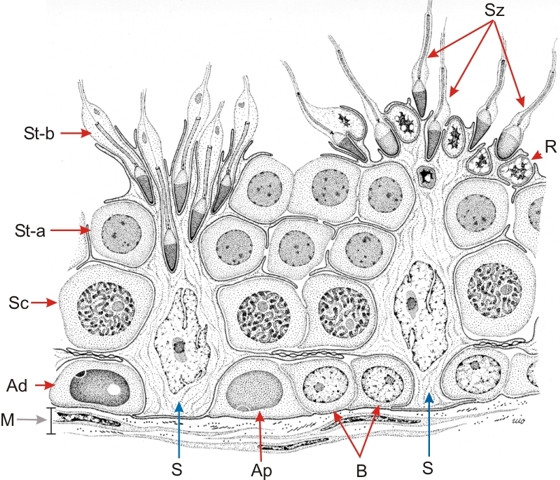 |
Drawing showing a small segment of a human seminiferous tubule.
Its seminiferous epithelium is composed of two main classes of cells: non-dividing somatic cells, or Sertoli cells (S), and germinal cells, that is, the spermatogonia (Ad, Ap and B) seen along the limiting membrane (M), the pachytene spermatocytes (Sc), the early round spermatids (St-a); the late elongated spermatids (St-b) and the spermatozoa (Sz).
Sertoli cell functions are the following:
- They are permanent supportive elements.
- They provide nutritive substances to the germinal cells.
- They secrete the luminal fluid.
- They are endocytic.
- They are phagocytic and eliminate residual bodies (R).
- They form a blood-testis barrier between the spermatogonia and the spermatocytes.
|
